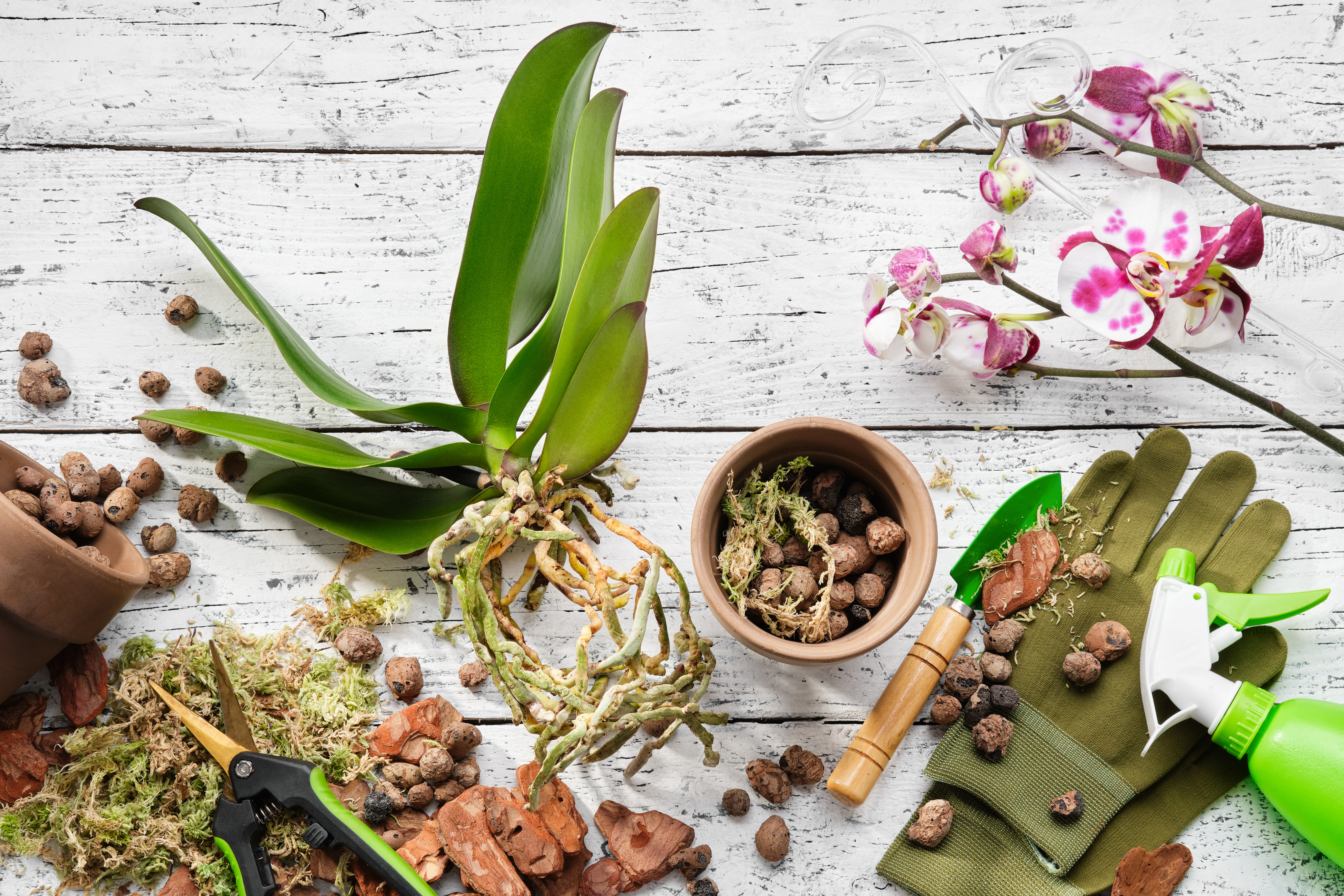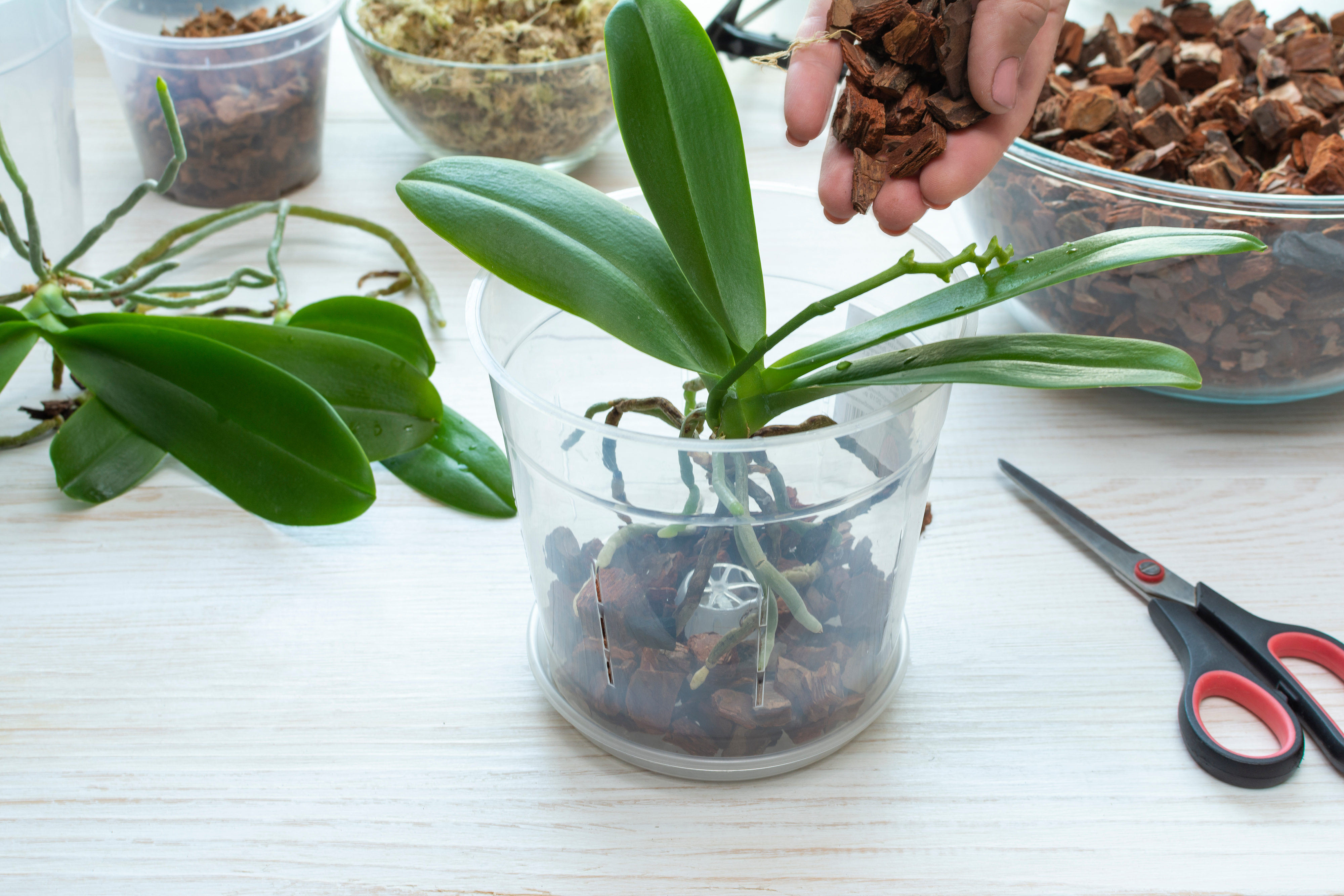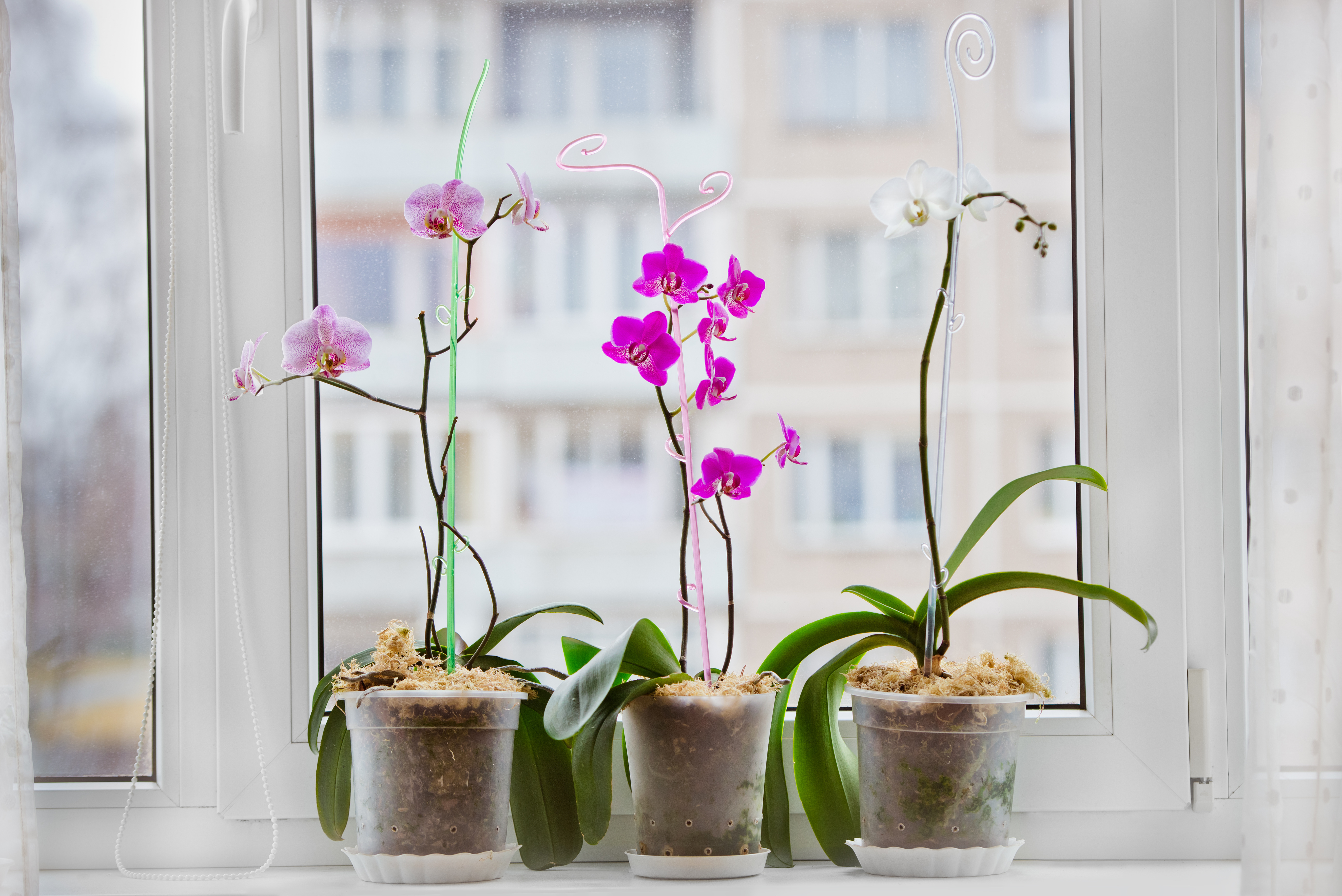How to repot your Orchid
Not sure if your orchid needs to be repotted?
It’s wobbly, top-heavy and easily falls out of the pot
Roots have started to grow out of the drainage holes or are mostly growing outside the pot
The roots don’t look healthy
The orchid potting medium has almost decayed and now looks more like soil
It hasn't been repotted since you got it and it's now done flowering

Two options to consider when repotting
Use a bigger pot
If the root system has outgrown the old pot.
Same pot, new medium
Only if the root system still fits in its old pot.
Recommended soil / Compost

This is how you repot your Orchid
Water the plant Soak your plant in water to loosen up the potting medium from the pot and to make the roots more flexible.
Remove the pot Gently take hold of the plant and start to loosen the pot– avoiding pulling on the stems or branches. If the pot won’t come off, squeeze the pot gently to loosen the roots. You can also gently tap on the outside of the pot with a tool or on the bench. If it still doesn't come off you can cut open the pot with sharp scissors.
Prune the roots Do root control and remove anything that looks dead, moldy or rotten. If both the substrate and the roots look healthy you can just stick to loosen them with your fingers. If you have to remove some rotted roots you can mist the root system with hydrogen peroxide diluted in water to kill off pathogens.
Choose the pot The roots are thick and need plenty of light and good aeration. They require a pot that is suitable for orchids. These pots are usually transparent but can also be basket-shaped or made out of clay with a good amount of drainage holes, sometimes even on the sides of the pot. When picking out a new pot, think about using one that’s only slightly bigger than the last one. About 1”-2” larger is a good rule of thumb. If you pick a pot that's too large, there's a risk that the new potting medium won’t be able to dry up quickly enough between waterings, which might cause your plant to suffocate in a wet substrate.
Clean the pot Make sure the new pot is clear of old potting mix. Wash it with soap, rinse well and dry. If you use a dirty container when repotting your plant, there’s a risk that pathogens are still alive in the old soil, which can infect your plant.
Pour potting mix into the bottom of the pot Add your medium to the bottom of the pot. Make sure that you put down the right amount - the root ball should be placed a few inches under the edge of the pot. If you place it too high your plant will not be stable.
Adjust your plant Place the plant on top of the potting mix and check so that it’s centered before adding more.
Fill your pot Add potting mix around the plant. Gently tap on the sides of the pot to help it fall into place. You want the compost to stay in place but not press it down too much which could harm the roots. Make sure your plant is not placed too deep into the pot as this can cause stem rot.
Water Submerge the pot in water or water the plant until water starts to pour through the drainage holes. If your Orchid was watered close to the repotting, you might want to skip this step and just stick to the schedule instead.
More potting mix? Sometimes you need to add more after watering the plant. Make sure that your plant has enough medium around its roots before you are done.

After repotting
Repotting is stressful for plants. It takes about one month before your plant is fully recovered and can start to enjoy the new and improved environment.
During this period make sure to
Place the plant in a bright but sheltered place.
Water it, but stick to the schedule if possible. Follow the instructions in Planta to get it right.
Don’t feed it. The new soil is filled with plant food, so adding more can harm the already stressed out roots.